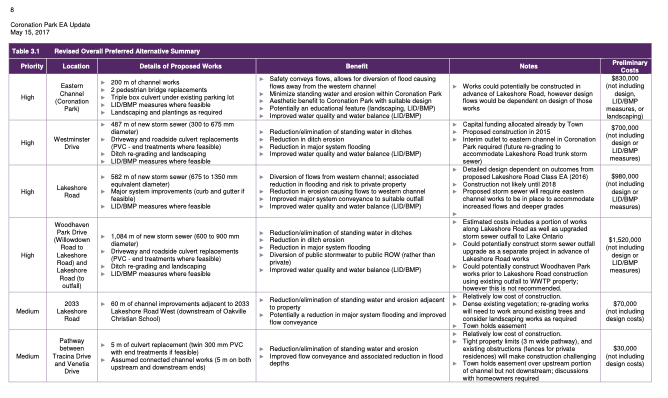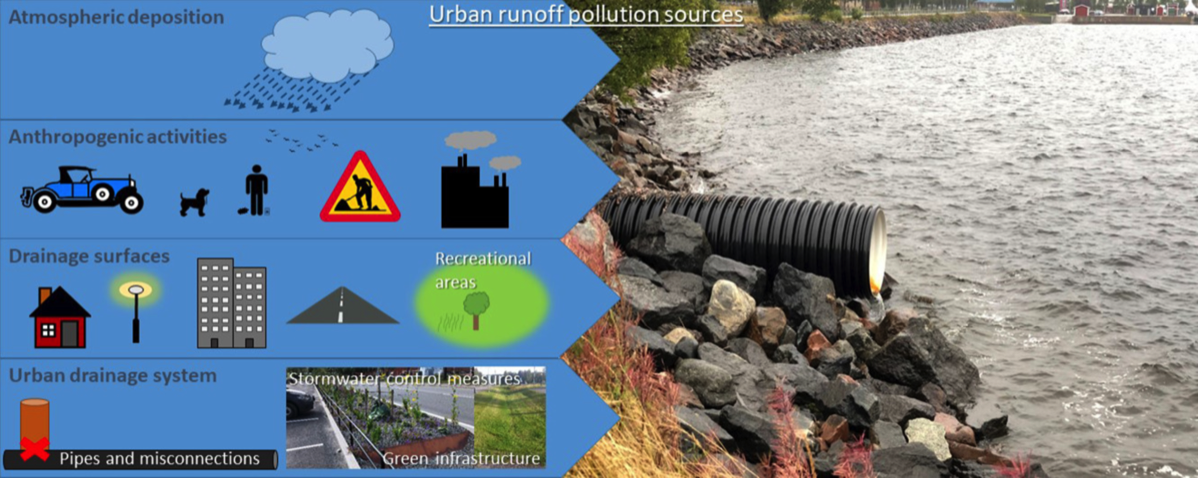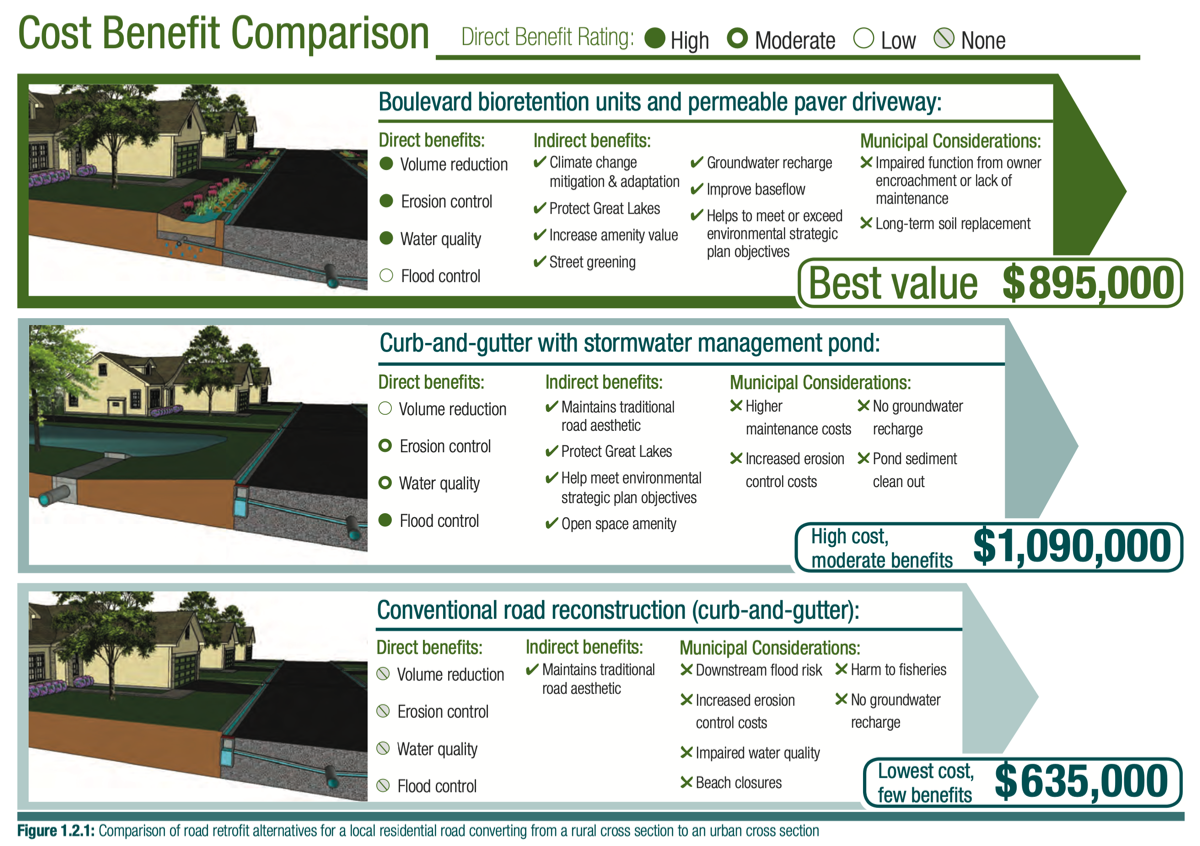Westminster Drive/Woodhaven Park Drive Stormwater Solutions
Update: At a Meeting of Council, held November 20, 2023, Council voted unanimously to uphold its original decision and direct staff to undertake a stormwater design for Westminster Drive and Woodhaven Park Drive based on retaining rural profile of the streets with open ditches and additional green infrastructure where it can be used.
Read the Inside Halton Article
The Facts. The Details.
An Environmental Assessment (EA) was undertaken as a drainage study for the residential area near Coronation Park.
It was completed and in 2017, and its stormwater recommendations for several streets in the study - including both Westminster Drive and Woodhaven Park Drive, formed the basis of the final report.
It was completed and in 2017, and its stormwater recommendations for several streets in the study - including both Westminster Drive and Woodhaven Park Drive, formed the basis of the final report.
- In that report, the EA report stated both Town staff and the general public wanted to retain the rural cross-section of the road - thus maintaining the natural drainage system of ditches that support stormwater conveyance. Please see information on green infrastructure below.
Result of the EA? A Combination of Measures
Recommendations in the Final Report are termed as being the 'Preferred Alternative' for each street in question. Below are the detailed plans for each street. These solutions incorporate a combination of the retention of our natural infrastructure (ditches) with enhances such as additional low impact development and a storm sewer.
Westminster Drive
* Ditch re-grading and landscaping
* Driveway and roadside culvert replacement
* 487m storm sewer
* LID (low impact development/green infrastructure) Best Management Practices to be assessed and incorporated where feasible during final design.
Woodhaven Park Drive
* Driveway and roadside culvert replacement
* Ditch re-grading and landscaping
* 1,084m storm sewer
* LID (low impact development/green infrastructure) Best Management Practices to be assessed and incorporated where feasible during final design.
* Ditch re-grading and landscaping
* Driveway and roadside culvert replacement
* 487m storm sewer
* LID (low impact development/green infrastructure) Best Management Practices to be assessed and incorporated where feasible during final design.
Woodhaven Park Drive
* Driveway and roadside culvert replacement
* Ditch re-grading and landscaping
* 1,084m storm sewer
* LID (low impact development/green infrastructure) Best Management Practices to be assessed and incorporated where feasible during final design.
Council Approval
In June of 2017, Town staff brought forth a report to the standing committee of Council (Community Services Committee) seeking approval of the EA and its Preferred Alternatives. Staff supported the recommendations of the report to retain the rural road cross-section, restore ditches, install new culverts, etc. and add to them with a sewer pipe and new, additional low impact development measures.
They even went so far as to include a table outlining the various solutions on a street by street situation. The committee voted approval.
One week later, Council met and approved the motion from Community Services. Oakville was on its way to providing a stormwater solution with green infrastructure and the latest technologies available.
They even went so far as to include a table outlining the various solutions on a street by street situation. The committee voted approval.
One week later, Council met and approved the motion from Community Services. Oakville was on its way to providing a stormwater solution with green infrastructure and the latest technologies available.
Staff Doesn't Follow Council Directive
Fast forward to 2023.
** Staff announces it plans to undertake a construction project on Westminster that is entirely different than the plan that was approved by Council!
** Green infrastructure is gone, as are the existing ditches. And to add a further blow to residents they plan to add a sidewalk on one side.
** Staff announces it plans to undertake a construction project on Westminster that is entirely different than the plan that was approved by Council!
** Green infrastructure is gone, as are the existing ditches. And to add a further blow to residents they plan to add a sidewalk on one side.
The Issues Explained
Open all Close all
The Sidewalk Issue
Oakville’s Official Plan, Livable Oakville in its Section 2 Guiding Principles states:
Preserving and creating a livable community in order to: preserve, enhance, and protect the distinct character, cultural heritage, living environment, and sense of community of neighbourhoods.
Residents who attended the PIC stressed the importance and value they placed on the area’s rural nature. It was a deciding factor for new residents who chose to move to the area and a long-standing characteristic strongly defended by those who are long-time residents. The ambiance and sense of neighbourhood of the Coronation Park community is, in part, shown through the practices of sharing the road by those who walk, roll and otherwise traverse the area. It has been a tradition recognized by residents for more than half a century and one that continues today.
Preserving and creating a livable community in order to: preserve, enhance, and protect the distinct character, cultural heritage, living environment, and sense of community of neighbourhoods.
Residents who attended the PIC stressed the importance and value they placed on the area’s rural nature. It was a deciding factor for new residents who chose to move to the area and a long-standing characteristic strongly defended by those who are long-time residents. The ambiance and sense of neighbourhood of the Coronation Park community is, in part, shown through the practices of sharing the road by those who walk, roll and otherwise traverse the area. It has been a tradition recognized by residents for more than half a century and one that continues today.
- During the Active Transportation Management Plan review process of 2016, with its Public Information Centres, stakeholder meetings, etc. no comment or identification was made by either organizers or the public regarding the desire, plan or need for a sidewalk on Westminster Drive.
- Westminster was added by staff as a candidate for a sidewalk prior to the final report. Yet, no consultation, discussion or engagement was undertaken with area residents.
- We direct your attention to Page 35 of the Active Transportation Master Plan Final Report 2017, where New Candidate Route Alternatives are discussed. It states “The new candidate routes and facility types that were identified for additional review and consideration are illustrated on Maps 3 and 4 as well. An assessment of each of these was completed using the route selection criteria confirmed in step 2, along with a significant amount of input from the public and local stakeholders”. As stated above, no input was sought from Westminster Drive residents at any time. The same is true of the period of time since the 2017 report to present day.
- The Town has employed a practice of majority vote with residents who have requested sidewalk additions in already-established neighbourhoods. The same should be true for residents of Westminster Drive. If a majority of residents are in favour of a sidewalk and its placement on the west side of the street, the project would proceed. If not, the project is eliminated from plans.
Our Position
Questions?
If you have questions, additional details or help with understanding the issues, please contact us. We're here to help.
Last but not least, we need everyone to attend the November 20th meeting at Town Hall. It's important!
Last but not least, we need everyone to attend the November 20th meeting at Town Hall. It's important!


